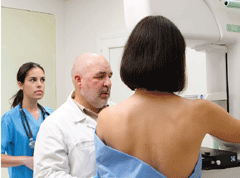Chaperone policies protect patients, practices, providers, and institutions
 The prevalence of sexual abuse claims in health care settings is widespread and alarming. A 2021 study by the National Institute of Health reported that 5% of women and 2% of men have experienced some manner of sexual abuse or misconduct at the hands of medical professionals in a care setting.
The prevalence of sexual abuse claims in health care settings is widespread and alarming. A 2021 study by the National Institute of Health reported that 5% of women and 2% of men have experienced some manner of sexual abuse or misconduct at the hands of medical professionals in a care setting.
The issue arises with sensitive exams that require patients to be undressed or involve physical contact, such as breast, pelvic, genital, and rectal examinations. Complaints often occur when these exams are conducted with only the provider and the patient present. Implementing chaperone policies/protocols in care settings is crucial for patients, practices, and institutions. These policies should establish protocols for offering patients the option to have a chaperone present during any exam.
The chaperone's role is to provide comfort and reassurance to the patient. Additionally, a chaperone may be provided by the provider to ensure the comfort and safety of both the patient and the provider. While the primary purpose of these protocols is to protect patients, the presence of a chaperone also helps protect the provider and the institution from unfounded allegations of sexual misconduct or abuse.
A good chaperone policy should cover the availability of chaperones, a description of their role, protocols for informing the patient and maintaining their confidentiality, as well as documentation and training requirements. You can learn more about designing and implementing an effective chaperone policy by reading the practice tip Incorporating Chaperones During Patient Examinations.
